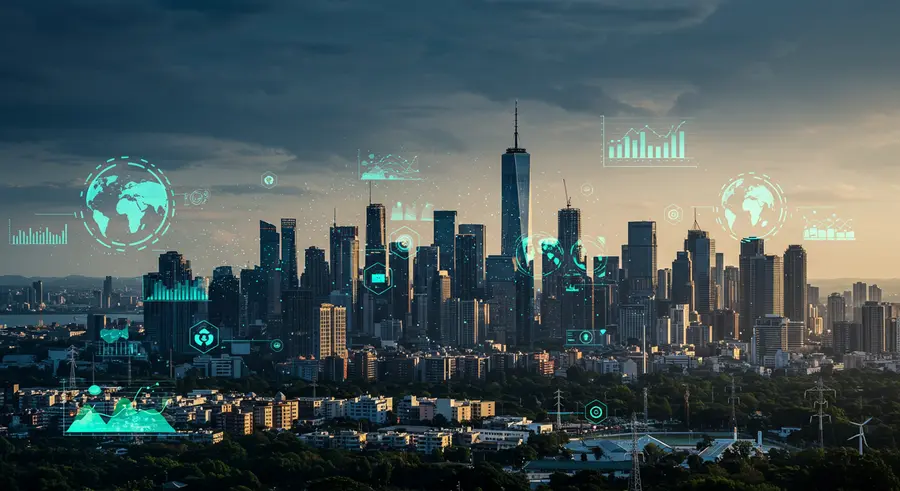Digital Twins for Sustainable Development & Environmental Impact

A New Era of Green Technology
Digital twin technology is emerging as a powerful ally in the global fight for sustainable development and mitigating environmental impact. By creating precise virtual replicas of physical assets, processes, and even entire ecosystems, digital twins offer unprecedented capabilities for monitoring, analyzing, and optimizing environmental performance.
Imagine a smart city where every building, every energy grid, and every waste management system has a digital counterpart. This allows urban planners to simulate the impact of new developments, optimize traffic flow to reduce emissions, and manage resources with pinpoint accuracy. This is not a distant dream; it's rapidly becoming a reality thanks to advancements in IoT, AI, and big data analytics, paving the way for more efficient and eco-friendly urban environments.
Key Applications in Sustainability
- Smart Cities and Infrastructure: Digital twins enable real-time monitoring of energy consumption, traffic patterns, air quality, and waste generation. This data-driven approach helps cities identify inefficiencies, implement greener solutions, and respond proactively to environmental challenges. For example, optimizing public transport routes to reduce fuel consumption or identifying areas for green space development to combat urban heat islands.
- Renewable Energy Optimization: Digital twins are crucial for managing and optimizing renewable energy sources like solar farms and wind turbines. They can simulate various weather conditions, predict energy output, and identify potential maintenance needs, ensuring maximum efficiency and reducing downtime.
- Precision Agriculture: Farmers can use digital twins of their fields to monitor soil health, water usage, and crop growth. This allows for precise application of resources, minimizing waste and maximizing yield, leading to more sustainable food production.
- Waste Management and Circular Economy: Digital twins can model waste collection, sorting, and recycling processes, identifying bottlenecks and optimizing resource recovery. They support the transition towards a circular economy by tracking materials throughout their lifecycle and promoting reuse and recycling.
- Environmental Monitoring and Climate Resilience: Digital twins of natural environments, such as forests or water bodies, can help monitor pollution levels, track biodiversity, and predict the impact of climate change. This provides valuable insights for conservation efforts and disaster preparedness.
Benefits and Overcoming Hurdles
The benefits of integrating digital twins into sustainability initiatives are immense: significant reductions in energy consumption and waste, improved resource allocation, enhanced predictive maintenance for green infrastructure, and better-informed decision-making for environmental policies. They allow for testing "what-if" scenarios without real-world consequences, accelerating innovation in eco-friendly solutions.
However, challenges exist, including the high initial investment in data collection and modeling, the need for robust data security and privacy protocols, and the complexity of integrating diverse data sources. Overcoming these requires strong interdisciplinary collaboration, standardized data formats, and scalable cloud infrastructure.
The Future: A Greener Tomorrow with Digital Twins
As technology continues to advance, the potential of digital twins in sustainable development will only grow. We can anticipate more sophisticated models that integrate even more complex environmental data, leading to hyper-efficient resource management and predictive capabilities for climate-related events. The convergence of digital twins with AI and machine learning will unlock new levels of insight, enabling proactive rather than reactive environmental strategies.
The future sees digital twins playing a central role in achieving global sustainability goals, driving innovations in green technology, and fostering a deeper understanding of our planet's complex systems. For those interested in leveraging advanced analytics and AI for strategic decision-making, particularly in areas involving complex data and future forecasting, exploring tools that offer AI-powered market insights can provide a significant advantage.